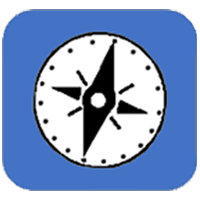Events

Conservation Efforts Database: Single-Record Entry and the Interactive Map
View webinar recording. Join the webinar that walks through processes to register for a Conservation Efforts Database User Profile and how we enter information using the 'single-record' entry option. Lastly, we'll touch on the role of 'approving officials', how to select them within your agency or organization, and the associated responsibilities.

Growing up: Findings from a JFSP student project on post-fire conifer regeneration trajectories in eastern OR
View webinar recording. This presentation will focus on findings from JFSP-supported graduate research on post-fire conifer establishment following recent wildfires in eastern Oregon's Blue Mountains. Given shifting climate and wildfire regimes, managers and researchers seek information on forest resilience and recovery trajectories. Understanding establishment and growth rates post-fire is pertinent both to fuels management planning,…

New reforestation practices for post-wildfire landscapes: Building early resilience
View webinar recording. The increasing frequency and severity of fire and drought events have negatively impacted the capacity and success of reforestation efforts in many dry, western forests. Challenges to reforestation include the size, cost, and safety concerns of replanting large areas with standing dead trees, and high seedling and sapling mortality rates due to…

What’s new in LANDFIRE: Remap
View webinar recording. This webinar seeks to inform participants about what to expect from LANDFIRE Remap products, and what has and has not changed from previous product offerings. We will discuss what we have learned since February 2019 when the products were made available to users in the Northwest, and how LANDFIRE resources can address…

Climatic controls on post-fire regeneration and growth in ponderosa pine and Douglas-fir
View webinar recording. In this webinar, Dr. Kimberley Davis examined the effects of climate on post-fire conifer regeneration and subsequent seedling and tree growth. She and her colleagues focused on lower elevation ponderosa pine and Douglas-fir forests to identify the climate conditions that are necessary for these species to regenerate and grow following fire. Their…

Wildland firefighter fatalities in the context of prescribed fire
View webinar recording. Is the risk of death the same when implementing "planned events"? What do the numbers we have as well as some specific events have say about that? Travis Dotson will provide prescribed fire practitioners a few specific elements to consider related to this topic and lessons available from both planned and unplanned…

Bringing non-profits, communities, and federal agencies together for restoration and monitoring
View webinar recording. Join this webinar and robust discussion about innovative collaborations and case studies developed through a partnership between Trout Unlimited and the Forest Service. We will share examples of successful projects, tools such as partnership agreements, and how this model of volunteer monitoring can be expanded across other resource areas and throughout the…

Native mycorrhizal fungi and whitebark pine restoration
View webinar recording. Whitebark pine is an iconic, five-needle, high-elevation pine whose existence is threatened by an exotic rust, mountain pine beetles, fire suppression, and climate change. Its distribution is limited to western North America and populations have declined 90% in recent decades. Whitebark pine is shade intolerant and depends on wildfire to reset the…

Fire history paradigms in North America: Controversy and consensus
View webinar recording. There is wide agreement that prescribed fire is essential and under-utilized for restoring and maintaining natural ecosystem function, sustaining native wildlife populations, and mitigating wildfire hazard. There is less agreement on the history of fire, specifically the degree to which historic fire regimes and the natural communities that depend on them are…

Rx Fire on Private Lands Workshop 2019
More information and to register. A two day workshop May 17-18 at Blodgett Forest Research Station, Georgetown, CA - designed for landowners and managers looking to gain skills in prescribed fire planning and implementation. Day One: Local fire history and current fire research Prescribed fire permitting and legal considerations Cal Fire’s Vegetation Management Program Fire…

